Difference between revisions of "Planets"
m |
MikeParadox (talk | contribs) (→Planet Statistics: home planet max allegiance is 11??) |
||
| (5 intermediate revisions by 2 users not shown) | |||
| Line 1: | Line 1: | ||
| − | Key components to Darkspace, planets are vital to strategic control as well as fueling the economy, making [[Ships]], mining [[Resource|Resources]],and many other tasks. Many are plain and bare some are fiery infernos, some might be paradises and some may be big balls of gas. Each planet can support 32 [[Infantry]] units and 32 [[Planetary Structures|Structures]], with the exception of the Home Planets, which can hold 40 units and structures. | + | Key components to Darkspace, planets are vital to strategic control as well as fueling the economy, making [[Ship|Ships]], mining [[Resource|Resources]],and many other tasks. Many are plain and bare some are fiery infernos, some might be paradises and some may be big balls of gas. Each planet can support 32 [[Infantry]] units and 32 [[Planetary Structures|Structures]], with the exception of the Home Planets, which can hold 40 units and structures. |
==Planet Statistics== | ==Planet Statistics== | ||
| Line 12: | Line 12: | ||
===Gas planets=== | ===Gas planets=== | ||
| + | {{Planet|planetName=Gas|planetImage=Gas|type=Gas|alleglimit=0|structlimit=0|Inflimit=0|basehab=0|foodprod=0|rescap=0}} | ||
| + | |||
Gas Giants are huge planets with thick atmospheres of Hydrogen and Helium. These planets have no surface, and as such are uninhabitable, but many support moons that can be colonized. | Gas Giants are huge planets with thick atmospheres of Hydrogen and Helium. These planets have no surface, and as such are uninhabitable, but many support moons that can be colonized. | ||
| + | <div style="clear:both"> | ||
===Inferno planets=== | ===Inferno planets=== | ||
| + | {{Planet|planetName=Inferno|planetImage=Inferno|type=Inferno|alleglimit=0|structlimit=0|Inflimit=0|basehab=0|foodprod=0|rescap=0}} | ||
| + | |||
These are rocky planets that have an excess of volcanic activity, or are so close to their parent star that their surface is molten. Surface temperatures easily reach into the thousands of degrees. These planets are uncolonizable and unconquerable. | These are rocky planets that have an excess of volcanic activity, or are so close to their parent star that their surface is molten. Surface temperatures easily reach into the thousands of degrees. These planets are uncolonizable and unconquerable. | ||
| + | |||
| + | <div style="clear:both"> | ||
===Barren planets=== | ===Barren planets=== | ||
| + | {{Planet|planetName=Barren|planetImage=Barren|type=Barren|alleglimit=3|structlimit=32|Inflimit=32|basehab=0|foodprod=0|rescap=100'000}} | ||
These planets are lumps of rock floating in space. Uninhabitable without structures, these planets are often used as resource providers for the more livable planets. | These planets are lumps of rock floating in space. Uninhabitable without structures, these planets are often used as resource providers for the more livable planets. | ||
| − | + | <div style="clear:both"> | |
| − | |||
| − | |||
| − | |||
| − | |||
| − | === | + | ===Ice planets=== |
| − | + | {{Planet|planetName=Ice|planetImage=Ice|type=Ice|alleglimit=5|structlimit=32|Inflimit=32|basehab=20|foodprod=30|rescap=200'000}} | |
| − | |||
| − | |||
| − | |||
| − | |||
| − | |||
| − | |||
| − | |||
Frozen over ocean planets, these balls of ice give the hardest challenges for colonists, sporting subzero surface temperatures and constant snowstorms across much of the planet. | Frozen over ocean planets, these balls of ice give the hardest challenges for colonists, sporting subzero surface temperatures and constant snowstorms across much of the planet. | ||
| + | <div style="clear:both"> | ||
| − | + | ===Ocean planets=== | |
| − | + | {{Planet|planetName=Ocean|planetImage=Aqua|type=Ocean|alleglimit=8|structlimit=32|Inflimit=32|basehab=20|foodprod=60|rescap=300'000}} | |
| − | |||
| − | |||
| − | |||
| − | |||
These planets are covered all over by miles deep ocean. No landmasses rise above the ocean save for occasional small islands and archipelagos. These planets are quite capable of supporting life, but have small base habitats due to the lack of usable land. | These planets are covered all over by miles deep ocean. No landmasses rise above the ocean save for occasional small islands and archipelagos. These planets are quite capable of supporting life, but have small base habitats due to the lack of usable land. | ||
| + | <div style="clear:both"> | ||
| + | |||
| + | ===Arid planets=== | ||
| + | {{Planet|planetName=Arid|planetImage=Arid|type=Arid|alleglimit=5|structlimit=32|Inflimit=32|basehab=40|foodprod=10|rescap=400'000}} | ||
| − | + | Desert planets, these have pole to pole deserts and are incredibly hard to live on. Only the hardest people live on these planet sized Saharas without environmentally controlled dome environments and mechanized food production. | |
| − | + | <div style="clear:both"> | |
| − | |||
| − | |||
| − | |||
===Terran planets=== | ===Terran planets=== | ||
| + | {{Planet|planetName=Terran|planetImage=Terran|type=Terran|alleglimit=10|structlimit=32|Inflimit=32|basehab=50|foodprod=50|rescap=600'000}} | ||
| + | |||
Gems in a sea of rocks, these are the planets most like Humanity's homeworld Earth. Reasonable surface temperatures and adequate water supplies make these the most habitable planets in the known systems. The comparable ease of life on these planets also lends to their ability to support more resources than the other planet types, and makes them attractive for hosting Shipyards. | Gems in a sea of rocks, these are the planets most like Humanity's homeworld Earth. Reasonable surface temperatures and adequate water supplies make these the most habitable planets in the known systems. The comparable ease of life on these planets also lends to their ability to support more resources than the other planet types, and makes them attractive for hosting Shipyards. | ||
| − | + | <div style="clear:both"> | |
| − | |||
| − | |||
| − | |||
| − | |||
===Home planets=== | ===Home planets=== | ||
| + | {{Planet|planetName=Home Planet|planetImage=Home|type=Home|alleglimit=11|structlimit=40|Inflimit=40|basehab=75|foodprod=75|rescap=1'000'000}} | ||
| + | |||
Home planets are the homeworlds of the 3 Factions in Darkspace. These planets, due to their positions as the capitals and economic centers of their respective civilizations, are able to support more structures and improvements than the average planet, supporting 40 over the normal 32. | Home planets are the homeworlds of the 3 Factions in Darkspace. These planets, due to their positions as the capitals and economic centers of their respective civilizations, are able to support more structures and improvements than the average planet, supporting 40 over the normal 32. | ||
| Line 69: | Line 64: | ||
Exathra - Homeworld for the [[ICC]], proclaimed the capital after the ICC sucession from UGTO control. Fourth planet of the CD+36*15693 system. | Exathra - Homeworld for the [[ICC]], proclaimed the capital after the ICC sucession from UGTO control. Fourth planet of the CD+36*15693 system. | ||
| − | Sag Hothha - Homeworld for the [[K' | + | Sag Hothha - Homeworld for the [[K'Luth]] species. According to K'Luth historical archives, it is actually the second K'Luth homeworld, after the destruction of the first at the hands of a mysterious machine based race, believed by many to be the [[MI]]. Moon of the 6th planet in the Sirius A system. |
| + | <div style="clear:both"> | ||
| + | |||
| + | ==Allegiance== | ||
| + | Allegiance is a new mechanism in Darkspace which improves the characteristics of a planets. | ||
| + | |||
| + | Allegiance is increased by maintaining governance of a single faction on a planet for a period of time. Time periods for each level are :- | ||
| + | :Level 1 - 4 hours | ||
| + | :Level 2 - 12 hours - 8 hours after Level 1 | ||
| + | :Level 3 - 28 hours (1 day 4 hours)- 16 hours after Level 2 | ||
| + | :Level 4 - 60 hours (2 days 12 hours) - 32 hours after Level 3 | ||
| + | :Level 5 - 124 hours (5 days 4 hours) - 64 hours after Level 4 | ||
| + | :Level 6 - 252 hours (10 days 12 hours) - 128 hours after Level 5 | ||
| + | :Level 7 - 508 hours (21 days 4 hours) - 256 hours after Level 6 | ||
| + | :Level 8 - 1020 hours (42 days 12 hours) - 512 hours after Level 7 | ||
| + | :Level 9 - 2044 hours (85 days 4 hours) - 1024 hours after Level 8 | ||
| + | :Level 10 - 4092 hours (170 days 12 hours) - 2048 hours after Level 9 | ||
| + | |||
| + | For every level of allegiance, a planet gains :- | ||
| + | :*10% to control. | ||
| + | :*10% to friendly infantry control boost. | ||
| + | :*10% to defence structure damage. | ||
| + | :*10% to resource production. | ||
| − | + | <!-- needed - complete list of things improved/affected by allegiance | |
| − | + | -theres a max limit on allegiance that a planet can have which depends on planet type - barren, terran, home. FIND THEM LIMITZ --> | |
| − | |||
| − | |||
| − | |||
==Planetary Events== | ==Planetary Events== | ||
| Line 101: | Line 115: | ||
If that roll is higher than (morale * 100) + 50, then it checks the allegiance level. If the allegiance is at zero, the planet revolts to neutral control. If it is higher than zero, it reduces the allegiance level by 1 and reduces the allegiance progress to zero. | If that roll is higher than (morale * 100) + 50, then it checks the allegiance level. If the allegiance is at zero, the planet revolts to neutral control. If it is higher than zero, it reduces the allegiance level by 1 and reduces the allegiance progress to zero. | ||
| − | If the roll wasn't higher then 25, the planet drops out of revolution state. | + | If the roll wasn't higher then 25, the planet drops out of revolution state. |
| + | ===Mining Find=== | ||
| + | Mining Find is an event that affects the resource mining output of a planet. If there is a Mining find event on a planet, then the mining output of that planet is multiplied by 4 for the duration of the event. | ||
| + | |||
| + | Let's assume we have a planet with 1 Colony Hub, 2 Mines and 1 Deep Core mine. | ||
| + | Mining output = Sum of Mining of each structure | ||
| + | = 5 + (5 * 2) + 9 = 24 | ||
| + | |||
| + | Now, if there is a Mining Find event on this planet, the net mining output becomes:-<br> | ||
| + | 24 * 4 = 96 | ||
| + | |||
| + | ===Economic Boom=== | ||
| + | Economic Boom is an event that affects the resource production level of a planet. If there is a Boom event on a planet, the production level of that planet is multiplied by 2 for the duration of the event. | ||
| + | |||
| + | Let's assume we have a planet with 1 Colony Hub, 2 Mines and 1 Deep Core mine. We also have a Factory on the planet. | ||
| + | Production level = Sum of production of each structure on planet | ||
| + | = 1 + 1 = 2 | ||
| + | There are only 2 types of structures (Colony hub and Factory) in-game which give 1 Production each. So Production level can also be calculated as the number of these structures present on a planet. | ||
| + | |||
| + | Resource output = Net Mining output * Net Production level | ||
| + | = 24 * (1 + 1) = 48 Resources per 10 seconds | ||
| + | |||
| + | Now, if there is a Boom event on this planet, the net resource production becomes:-<br> | ||
| + | 24 * (2 * 2) = 96 Resources per 10 seconds | ||
| + | |||
| + | ===Worker Strike=== | ||
| + | Worker Strike is an event that affects the resource mining output of a planet. If there is a Strike event on a planet, then the mining output of that planet is divided by 2, and rounded down to the nearest integer, for the duration of the event. | ||
| + | |||
| + | Let's assume we have a planet with 1 Colony Hub, 2 Mines and 2 Deep Core mines. | ||
| + | Mining output = Sum of Mining of each structure | ||
| + | = 5 + (5 * 2) + (9 * 2) = 33 | ||
| + | |||
| + | Now, if there is a Strike event on this planet, the net mining output becomes:-<br> | ||
| + | 33 ÷ 2 = 16 (rounded down from 16.5) | ||
| + | |||
| + | ===Smugglers=== | ||
| + | Smugglers is an event that affects the resource production level of a planet. If there is a Smugglers event on a planet, the production level of that planet is divided by 2, and rounded down to the nearest integer, for the duration of the event. | ||
| + | |||
| + | Let's assume we have a planet with 1 Colony Hub, 2 Mines and 1 Deep Core mine. We also have 2 Factories on the planet. | ||
| + | Production level = Sum of production of each structure on planet | ||
| + | = 1 + (1 + 1) = 3 | ||
| + | |||
| + | Resource output = Net Mining output * Net Production level | ||
| + | = 24 * 3 = 72 Resources per 10 seconds | ||
| + | |||
| + | Now, if there is a Smugglers event on this planet, the net resource production becomes:-<br> | ||
| + | 24 * (3 ÷ 2) = 24 * 1 (rounded down from 1.5) = 24 | ||
| + | |||
| + | *It is worth noting, that if a Planet's net production level is 1 and the planet has a Smuggler event ongoing, then there will be no resources produced.<br> | ||
| + | Let us assume we have a planet with X mining output, and a net production level of 1. A Smuggler event is also active. | ||
| + | Resource output = X * (1 ÷ 2) = X * (0.5) = X * 0 (rounded down from 0.5) = 0 | ||
| + | |||
| + | Engineers are advised to keep such scenarios in mind when building planets. | ||
==Test Planet== | ==Test Planet== | ||
Latest revision as of 12:27, 28 October 2012
Key components to Darkspace, planets are vital to strategic control as well as fueling the economy, making Ships, mining Resources,and many other tasks. Many are plain and bare some are fiery infernos, some might be paradises and some may be big balls of gas. Each planet can support 32 Infantry units and 32 Structures, with the exception of the Home Planets, which can hold 40 units and structures.
Contents
Planet Statistics
Each planet has a varying degree of colonization and industrialization possible, whose factors are given below :-
- Base Habitat refers to the amount of population a planet can support with no additional Dome structures.
- Base Food Production refers to how much food is produced per tick without additional food producing structures. Food is used to maintain the population, and if the population exceeds the food production, a global starvation begins.
- Resource Maximum refers to the highest number of Resource units the planet is capable of holding at one time. Resources are used to build structures and ships if the planet hosts a Shipyard.
- Structure Limit refers to the maximum number of structures that can be constructed on a planet. Most planet types support 32, with the exception being Infernos and Gas giants not being able to support any structures, and Home planets supporting 40.
Gas planets
| Gas | |
|---|---|
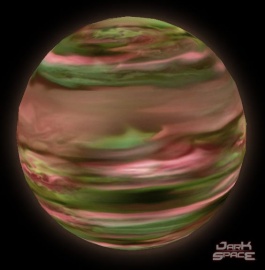
| |
| Type: | Gas |
| Allegiance Limit: | Level 0 |
| Structure Limit: | 0 Structures |
| Inf Limit: | 0 Infantry |
| Base Habitat: | 0 Population |
| Base Food Production: | 0 Food |
| Res Storage Cap: | 0 Resources |
Gas Giants are huge planets with thick atmospheres of Hydrogen and Helium. These planets have no surface, and as such are uninhabitable, but many support moons that can be colonized.
Inferno planets
| Inferno | |
|---|---|
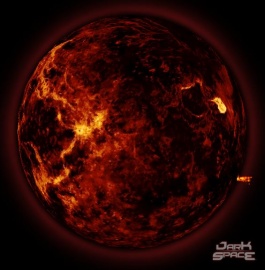
| |
| Type: | Inferno |
| Allegiance Limit: | Level 0 |
| Structure Limit: | 0 Structures |
| Inf Limit: | 0 Infantry |
| Base Habitat: | 0 Population |
| Base Food Production: | 0 Food |
| Res Storage Cap: | 0 Resources |
These are rocky planets that have an excess of volcanic activity, or are so close to their parent star that their surface is molten. Surface temperatures easily reach into the thousands of degrees. These planets are uncolonizable and unconquerable.
Barren planets
| Barren | |
|---|---|
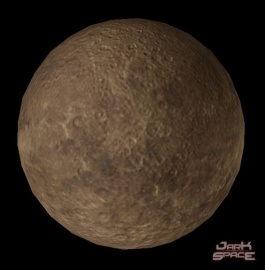
| |
| Type: | Barren |
| Allegiance Limit: | Level 3 |
| Structure Limit: | 32 Structures |
| Inf Limit: | 32 Infantry |
| Base Habitat: | 0 Population |
| Base Food Production: | 0 Food |
| Res Storage Cap: | 100'000 Resources |
These planets are lumps of rock floating in space. Uninhabitable without structures, these planets are often used as resource providers for the more livable planets.
Ice planets
| Ice | |
|---|---|
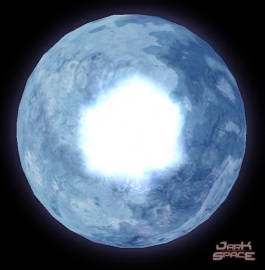
| |
| Type: | Ice |
| Allegiance Limit: | Level 5 |
| Structure Limit: | 32 Structures |
| Inf Limit: | 32 Infantry |
| Base Habitat: | 20 Population |
| Base Food Production: | 30 Food |
| Res Storage Cap: | 200'000 Resources |
Frozen over ocean planets, these balls of ice give the hardest challenges for colonists, sporting subzero surface temperatures and constant snowstorms across much of the planet.
Ocean planets
| Ocean | |
|---|---|
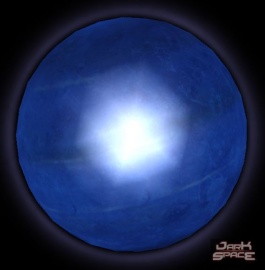
| |
| Type: | Ocean |
| Allegiance Limit: | Level 8 |
| Structure Limit: | 32 Structures |
| Inf Limit: | 32 Infantry |
| Base Habitat: | 20 Population |
| Base Food Production: | 60 Food |
| Res Storage Cap: | 300'000 Resources |
These planets are covered all over by miles deep ocean. No landmasses rise above the ocean save for occasional small islands and archipelagos. These planets are quite capable of supporting life, but have small base habitats due to the lack of usable land.
Arid planets
| Arid | |
|---|---|
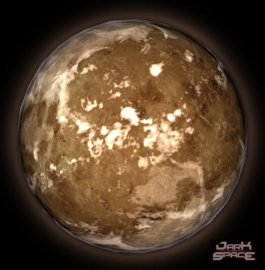
| |
| Type: | Arid |
| Allegiance Limit: | Level 5 |
| Structure Limit: | 32 Structures |
| Inf Limit: | 32 Infantry |
| Base Habitat: | 40 Population |
| Base Food Production: | 10 Food |
| Res Storage Cap: | 400'000 Resources |
Desert planets, these have pole to pole deserts and are incredibly hard to live on. Only the hardest people live on these planet sized Saharas without environmentally controlled dome environments and mechanized food production.
Terran planets
| Terran | |
|---|---|
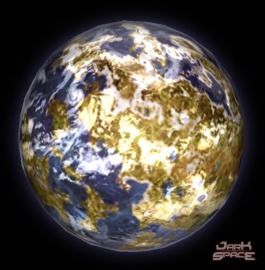
| |
| Type: | Terran |
| Allegiance Limit: | Level 10 |
| Structure Limit: | 32 Structures |
| Inf Limit: | 32 Infantry |
| Base Habitat: | 50 Population |
| Base Food Production: | 50 Food |
| Res Storage Cap: | 600'000 Resources |
Gems in a sea of rocks, these are the planets most like Humanity's homeworld Earth. Reasonable surface temperatures and adequate water supplies make these the most habitable planets in the known systems. The comparable ease of life on these planets also lends to their ability to support more resources than the other planet types, and makes them attractive for hosting Shipyards.
Home planets
| Home Planet | |
|---|---|
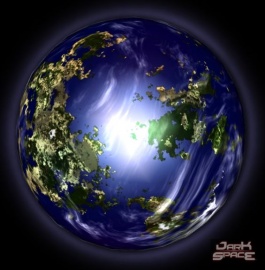
| |
| Type: | Home |
| Allegiance Limit: | Level 11 |
| Structure Limit: | 40 Structures |
| Inf Limit: | 40 Infantry |
| Base Habitat: | 75 Population |
| Base Food Production: | 75 Food |
| Res Storage Cap: | 1'000'000 Resources |
Home planets are the homeworlds of the 3 Factions in Darkspace. These planets, due to their positions as the capitals and economic centers of their respective civilizations, are able to support more structures and improvements than the average planet, supporting 40 over the normal 32.
Earth - Homeworld for the UGTO and for humanity in general. Third planet of the Sol system.
Exathra - Homeworld for the ICC, proclaimed the capital after the ICC sucession from UGTO control. Fourth planet of the CD+36*15693 system.
Sag Hothha - Homeworld for the K'Luth species. According to K'Luth historical archives, it is actually the second K'Luth homeworld, after the destruction of the first at the hands of a mysterious machine based race, believed by many to be the MI. Moon of the 6th planet in the Sirius A system.
Allegiance
Allegiance is a new mechanism in Darkspace which improves the characteristics of a planets.
Allegiance is increased by maintaining governance of a single faction on a planet for a period of time. Time periods for each level are :-
- Level 1 - 4 hours
- Level 2 - 12 hours - 8 hours after Level 1
- Level 3 - 28 hours (1 day 4 hours)- 16 hours after Level 2
- Level 4 - 60 hours (2 days 12 hours) - 32 hours after Level 3
- Level 5 - 124 hours (5 days 4 hours) - 64 hours after Level 4
- Level 6 - 252 hours (10 days 12 hours) - 128 hours after Level 5
- Level 7 - 508 hours (21 days 4 hours) - 256 hours after Level 6
- Level 8 - 1020 hours (42 days 12 hours) - 512 hours after Level 7
- Level 9 - 2044 hours (85 days 4 hours) - 1024 hours after Level 8
- Level 10 - 4092 hours (170 days 12 hours) - 2048 hours after Level 9
For every level of allegiance, a planet gains :-
- 10% to control.
- 10% to friendly infantry control boost.
- 10% to defence structure damage.
- 10% to resource production.
Planetary Events
Every 5 minutes, a planetary event can take place on a planet. Any of seven following events can occur:-
- Plague
- Revolution
- Mining Find
- Economic Boom
- Global Recession
- Worker Strike
- Smugglers
Revolution
Revolution is an event that may occur when the morale of a planet is "Low". It has a random chance of occurrence, and may subside without negative impacts or result in a decrease in allegiance.
Let's assume we have a planet with "okay" morale (0.6 on a scale of 0 to 1. High is considered .95 or higher) and we have hit the random event to have a revolution.
First the game checks to see if we have a revolution happening already. If we do, we'll discuss that later. Let's assume we don't. A roll is made between zero and 99. The chance of revolution is:-
Random(0, 99) > [(Morale * 100) + 40] (including both zero and 99, so 100 numbers).
That means that at "Okay" morale, there would never be a chance of a revolution, because (0.6 * 100) + 40 is greater than 99 at all times. Only when you have "low" morale (0.59 morale or less) are you at risk for a revolution.
Now, let's assume there is a revolution event active, and you hit another revolution event! The game then does the following: Make another roll.
Random(0,99) > [(Morale * 100) + 50]
If that roll is higher than (morale * 100) + 50, then it checks the allegiance level. If the allegiance is at zero, the planet revolts to neutral control. If it is higher than zero, it reduces the allegiance level by 1 and reduces the allegiance progress to zero.
If the roll wasn't higher then 25, the planet drops out of revolution state.
Mining Find
Mining Find is an event that affects the resource mining output of a planet. If there is a Mining find event on a planet, then the mining output of that planet is multiplied by 4 for the duration of the event.
Let's assume we have a planet with 1 Colony Hub, 2 Mines and 1 Deep Core mine.
Mining output = Sum of Mining of each structure
= 5 + (5 * 2) + 9 = 24
Now, if there is a Mining Find event on this planet, the net mining output becomes:-
24 * 4 = 96
Economic Boom
Economic Boom is an event that affects the resource production level of a planet. If there is a Boom event on a planet, the production level of that planet is multiplied by 2 for the duration of the event.
Let's assume we have a planet with 1 Colony Hub, 2 Mines and 1 Deep Core mine. We also have a Factory on the planet.
Production level = Sum of production of each structure on planet
= 1 + 1 = 2 There are only 2 types of structures (Colony hub and Factory) in-game which give 1 Production each. So Production level can also be calculated as the number of these structures present on a planet.
Resource output = Net Mining output * Net Production level
= 24 * (1 + 1) = 48 Resources per 10 seconds
Now, if there is a Boom event on this planet, the net resource production becomes:-
24 * (2 * 2) = 96 Resources per 10 seconds
Worker Strike
Worker Strike is an event that affects the resource mining output of a planet. If there is a Strike event on a planet, then the mining output of that planet is divided by 2, and rounded down to the nearest integer, for the duration of the event.
Let's assume we have a planet with 1 Colony Hub, 2 Mines and 2 Deep Core mines.
Mining output = Sum of Mining of each structure
= 5 + (5 * 2) + (9 * 2) = 33
Now, if there is a Strike event on this planet, the net mining output becomes:-
33 ÷ 2 = 16 (rounded down from 16.5)
Smugglers
Smugglers is an event that affects the resource production level of a planet. If there is a Smugglers event on a planet, the production level of that planet is divided by 2, and rounded down to the nearest integer, for the duration of the event.
Let's assume we have a planet with 1 Colony Hub, 2 Mines and 1 Deep Core mine. We also have 2 Factories on the planet.
Production level = Sum of production of each structure on planet
= 1 + (1 + 1) = 3
Resource output = Net Mining output * Net Production level
= 24 * 3 = 72 Resources per 10 seconds
Now, if there is a Smugglers event on this planet, the net resource production becomes:-
24 * (3 ÷ 2) = 24 * 1 (rounded down from 1.5) = 24
- It is worth noting, that if a Planet's net production level is 1 and the planet has a Smuggler event ongoing, then there will be no resources produced.
Let us assume we have a planet with X mining output, and a net production level of 1. A Smuggler event is also active. Resource output = X * (1 ÷ 2) = X * (0.5) = X * 0 (rounded down from 0.5) = 0
Engineers are advised to keep such scenarios in mind when building planets.
Test Planet
| Slinki | |
|---|---|
| 265px | |
| Type: | Barren |
| Allegiance Limit: | Level {{{alleglimit}}} |
| Structure Limit: | 40 Structures |
| Inf Limit: | 40 Infantry |
| Base Habitat: | 10 Population |
| Base Food Production: | 100 Food |
| Res Storage Cap: | 60 Resources |
The planet Slinki is a barren, horrible wasteland, but with a very tiny patch of grass where a few slinki's frolick and enjoy life.